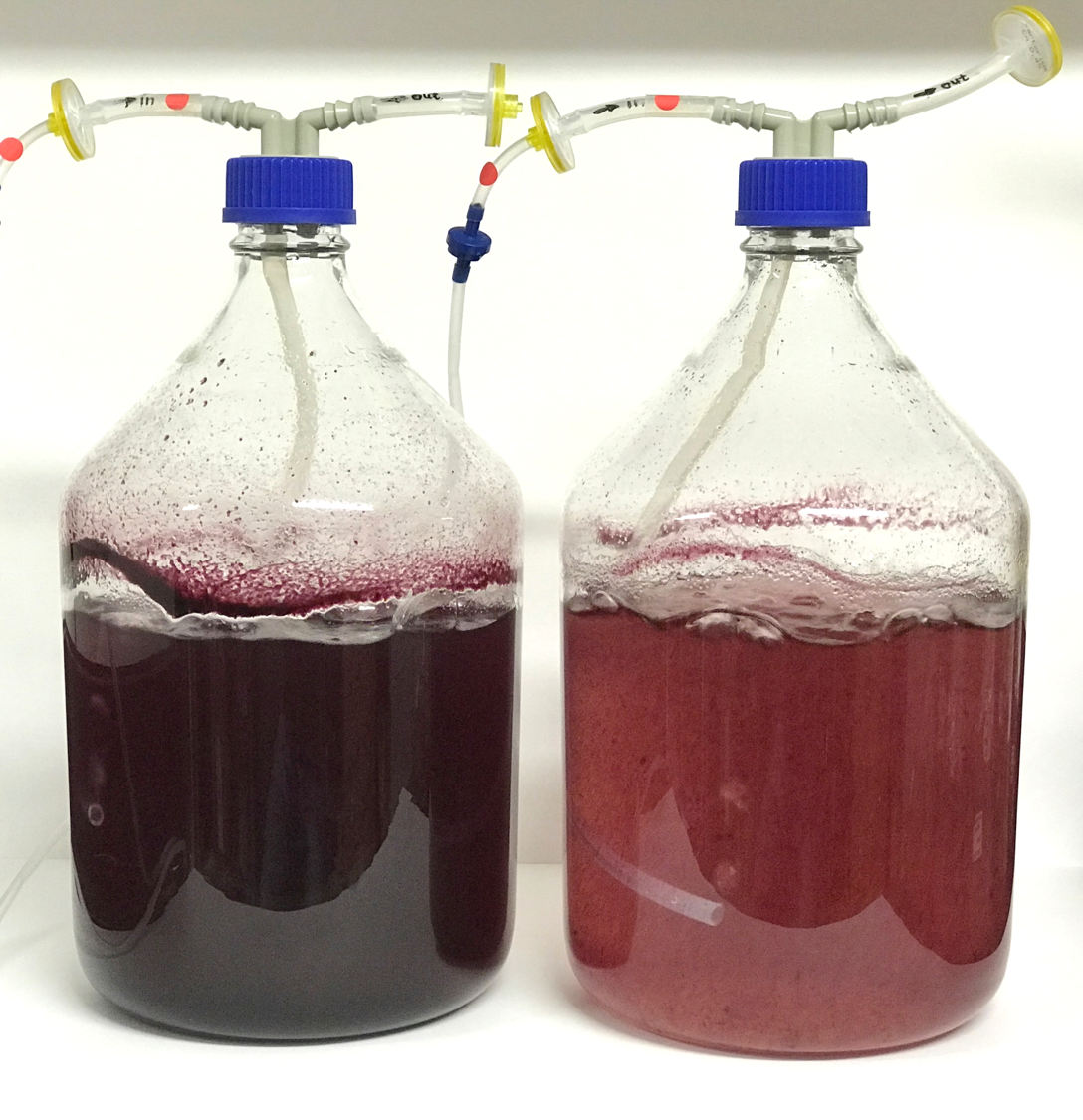Bioreactors with engineered tobacco (left) and wild-type grape (right) cell cultures.
OpenPlant Postdoc, Ingo Appelhagen, in Prof Cathie Martin's lab in the John Innes Centre has recently published an article in the journal Metabolic Engineering about his research to develop a system for production of high-levels of anthocyanins in plant cell cultures.
Anthocyanins give many fruits and flowers their red, purple or blue colouration. The martin lab are interested in the beneficial effects of anthocyanins in our diets and their use as natural colourants in the food and cosmetic industries.
Appelhagen I, Wulff-Vester AK, Wendell M, Hvoslef-Eide AK, Russell J, Oertel A, Martens S, Mock HP, Martin C, Matros A (2018). Colour bio-factories: Towards scale-up production of anthocyanins in plant cell cultures. Metabolic Engineering. Doi: https://doi.org/10.1016/j.ymben.2018.06.004
Abstract
Anthocyanins are widely distributed, glycosylated, water-soluble plant pigments, which give many fruits and flowers their red, purple or blue colouration. Their beneficial effects in a dietary context have encouraged increasing use of anthocyanins as natural colourants in the food and cosmetic industries. However, the limited availability and diversity of anthocyanins commercially have initiated searches for alternative sources of these natural colourants. In plants, high-level production of secondary metabolites, such as anthocyanins, can be achieved by engineering of regulatory genes as well as genes encoding biosynthetic enzymes. We have used tobacco lines which constitutively produce high levels of cyanidin 3-O-rutinoside, delphinidin 3-O-rutinoside or a novel anthocyanin, acylated cyanidin 3-O-(coumaroyl) rutinoside to generate cell suspension cultures. The cell lines are stable in their production rates and superior to conventional plant cell cultures. Scale-up of anthocyanin production in small scale fermenters has been demonstrated. The cell cultures have also proven to be a suitable system for production of 13C-labelled anthocyanins. Our method for anthocyanin production is transferable to other plant species, such as Arabidopsis thaliana, demonstrating the potential of this approach for making a wide range of highly-decorated anthocyanins. The tobacco cell cultures represent a customisable and sustainable alternative to conventional anthocyanin production platforms and have considerable potential for use in industrial and medical applications of anthocyanins.


